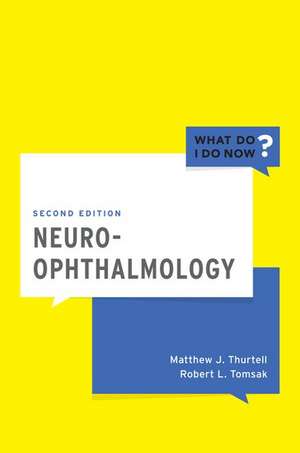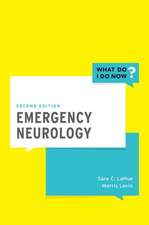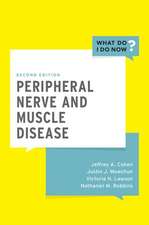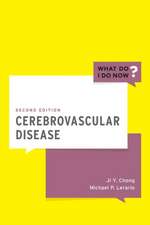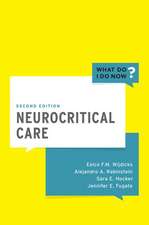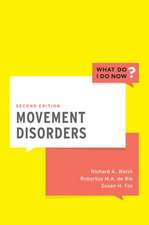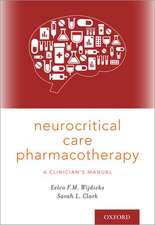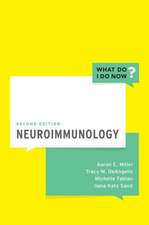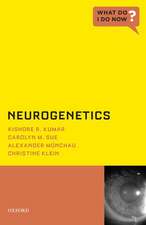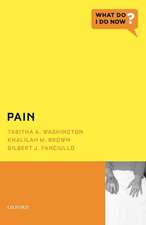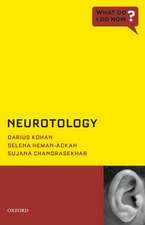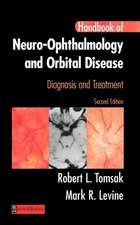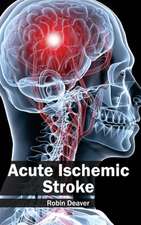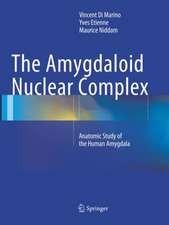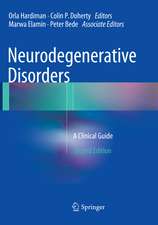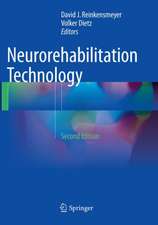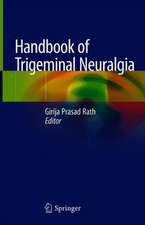Neuro-Ophthalmology: What Do I Do Now
Autor Matthew J. Thurtell, Robert L. Tomsaken Limba Engleză Paperback – 29 mai 2019
Din seria What Do I Do Now
- 5%
 Preț: 620.01 lei
Preț: 620.01 lei - 19%
 Preț: 412.97 lei
Preț: 412.97 lei - 10%
 Preț: 328.86 lei
Preț: 328.86 lei - 19%
 Preț: 306.96 lei
Preț: 306.96 lei - 23%
 Preț: 417.43 lei
Preț: 417.43 lei - 14%
 Preț: 294.53 lei
Preț: 294.53 lei - 24%
 Preț: 354.66 lei
Preț: 354.66 lei - 10%
 Preț: 352.97 lei
Preț: 352.97 lei - 14%
 Preț: 324.83 lei
Preț: 324.83 lei - 27%
 Preț: 316.45 lei
Preț: 316.45 lei - 23%
 Preț: 332.63 lei
Preț: 332.63 lei - 19%
 Preț: 486.84 lei
Preț: 486.84 lei - 24%
 Preț: 438.97 lei
Preț: 438.97 lei - 19%
 Preț: 371.03 lei
Preț: 371.03 lei - 27%
 Preț: 389.51 lei
Preț: 389.51 lei - 20%
 Preț: 464.33 lei
Preț: 464.33 lei - 22%
 Preț: 465.82 lei
Preț: 465.82 lei - 26%
 Preț: 337.74 lei
Preț: 337.74 lei
Preț: 565.87 lei
Preț vechi: 595.64 lei
-5% Nou
Puncte Express: 849
Preț estimativ în valută:
108.27€ • 113.06$ • 89.41£
108.27€ • 113.06$ • 89.41£
Carte tipărită la comandă
Livrare economică 15-29 aprilie
Preluare comenzi: 021 569.72.76
Specificații
ISBN-13: 9780190603953
ISBN-10: 019060395X
Pagini: 258
Dimensiuni: 155 x 231 x 15 mm
Greutate: 0.43 kg
Ediția:2
Editura: Oxford University Press
Colecția OUP USA
Seria What Do I Do Now
Locul publicării:New York, United States
ISBN-10: 019060395X
Pagini: 258
Dimensiuni: 155 x 231 x 15 mm
Greutate: 0.43 kg
Ediția:2
Editura: Oxford University Press
Colecția OUP USA
Seria What Do I Do Now
Locul publicării:New York, United States
Recenzii
This updated edition is a worthy entry in the field and is a must-read for ophthalmologists at all levels. The short, but concise nature of the book leaves no excuses not to do so. The information it contains can potentially aid in a more rapid and accurate diagnosis of patients who come in with neuro-ophthalmologic complaints.
Neuro-Ophthalmology in its second edition is concise, comprehensive, and reader friendly, providing the reader with a very well organized, practical approach to neuro-ophthalmology's most common problems. This text is excellent as both a standalone review of neuro-ophthalmology, and as a necessary aid to both experts and non-experts seeing these complicated patients.
Neuro-Ophthalmology is an easy read and the relevant information can be gleaned in just minutes. I highly recommend this companion to trainees and practitioners at every level of expertise looking for a quick neuro-ophthalmology guide.
Masterfully written, this book will break down the barriers of discomfort and unfamiliarity clinicians often face when confronted with Neuro-ophthalmologist symptoms and signs. The overall organization of the book is excellent, allowing for easy access to brief yet remarkably complete reviews of each Neuro-ophthalmologic diagnosis. I highly recommend it to any medical professional involved in the care of patients with visual symptoms!
Neuro-Ophthalmology in its second edition is concise, comprehensive, and reader friendly, providing the reader with a very well organized, practical approach to neuro-ophthalmology's most common problems. This text is excellent as both a standalone review of neuro-ophthalmology, and as a necessary aid to both experts and non-experts seeing these complicated patients.
Neuro-Ophthalmology is an easy read and the relevant information can be gleaned in just minutes. I highly recommend this companion to trainees and practitioners at every level of expertise looking for a quick neuro-ophthalmology guide.
Masterfully written, this book will break down the barriers of discomfort and unfamiliarity clinicians often face when confronted with Neuro-ophthalmologist symptoms and signs. The overall organization of the book is excellent, allowing for easy access to brief yet remarkably complete reviews of each Neuro-ophthalmologic diagnosis. I highly recommend it to any medical professional involved in the care of patients with visual symptoms!
Notă biografică
Matthew Thurtell, MBBS, is Associate Professor of Ophthalmology and Neurology at the University of Iowa, with appointments in the Department of Ophthalmology and Visual Sciences and Department of Neurology. He is Director of the Neuro-Ophthalmology Service at the University of Iowa, where has been on faculty since 2010. His clinical practice incorporates the spectrum of neuro-ophthalmic disorders. His research interests include eye movement disorders and idiopathic intracranial hypertension. He is currently Study Co-Director for the Surgical Idiopathic Intracranial Hypertension trial (SIGHT). Robert L. Tomsak, MD, PhD is Professor of Ophthalmology and Neurology at Wayne State University School of Medicine and Specialist in Neuro-ophthalmology at Kresge Eye Institute. He has practiced neuro-ophthalmology at the Cleveland Clinic Foundation, Mt. Sinai Medical Center in Cleveland and University Hospitals of Cleveland before moving to Kresge Eye Institute in Detroit in2010. His clinical practice includes a wide variety of neuro-ophthalmic disorders. His current research interests include the use of multifocal ERG in the diagnosis of nutritional amblyopia and the use of OCT and OCT-A in assessing papilledema in Idiopathic Intracranial Hypertension.
